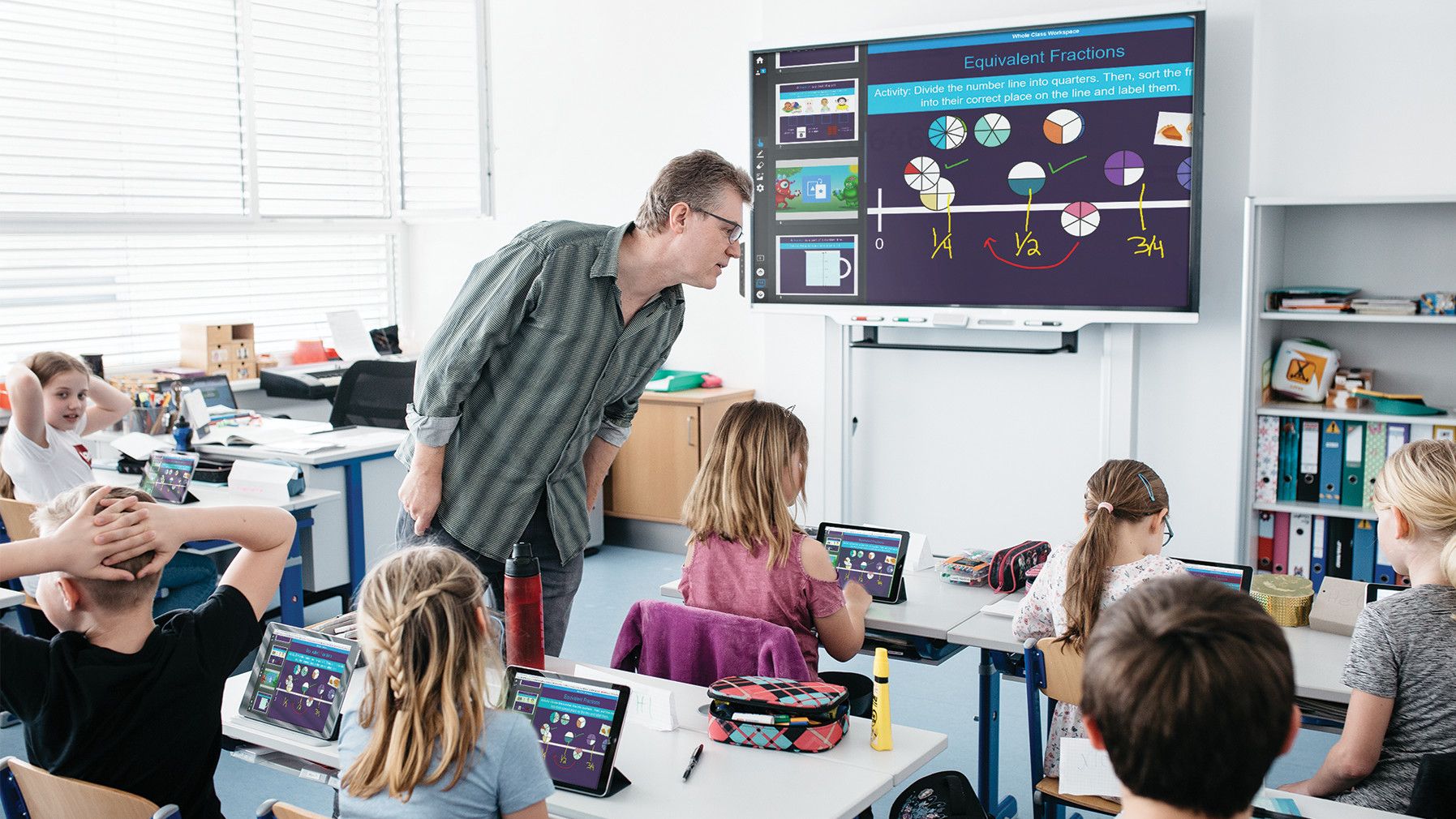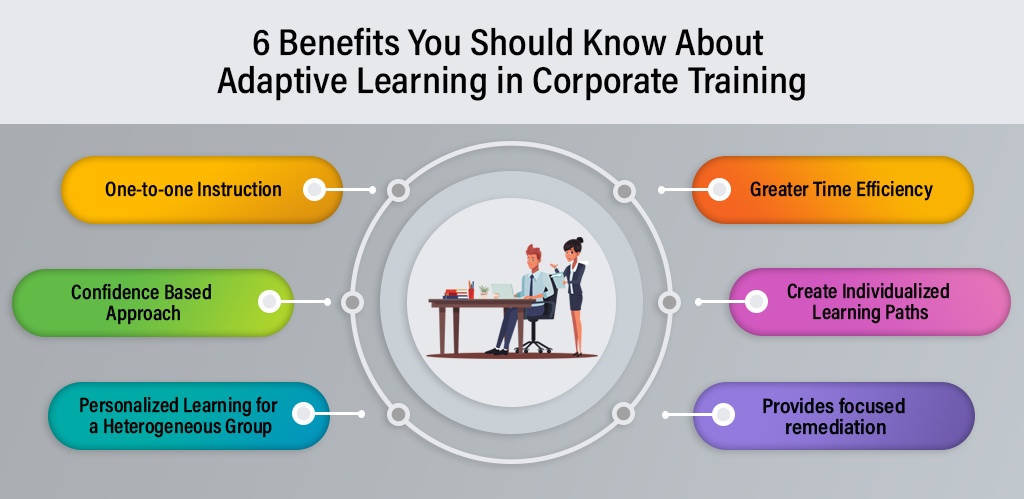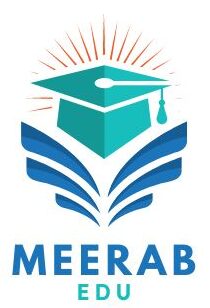Introduction of Education companies

Education is a dynamic field where companies are the driving force for innovation and shape the future of learning. These organizations use advanced technology and inclusive pedagogies to improve the academic experience. In this article, we will look at how education companies have transformed the sector through their initiatives, partnerships, and other changes. Let’s take some time to discuss education firms on their way to educational perfection.
Section 2: Leveraging EdTech Solutions for Enhanced Learning or Education companies

In the current state of education, EdTech (Educational Technology) solutions have changed teaching for both students and educators [9]. Education businesses are among those that drive this digital shift by utilizing technologies to provide more engaging, adaptable, and efficient learning processes.
- **Integration of Technology in Educational Platforms:**
-This includes Learning Management Systems (LMS), interactive whiteboards, educational apps; virtual reality (VR), and augmented reality (AR) applications, etc., as examples of these tools being integrated into traditional learning environments.
– Such technologies increase classroom involvement, facilitate distance studying, and offer interactivity that corresponds with different ways of learning.
– The modern education system uses such platforms as Google Classroom, Canvas, or Khan Academy regularly.
- **Advantages of EdTech in Personalized Learning:**
– One feature that makes EdTech beneficial is its capability to enable personalization when it comes to student-centered learning experiences. For example, adaptive algorithms used in instructional modules adjust contents based on individual performance levels.
– It allows students to take control over their learning process resulting in higher self-efficacy in studies which helps them stop struggling with their weaknesses thus closing development gaps within them at a glance [13].
– Adaptive systems like DreamBox or IXL have become popular due to increased possibilities for direct instruction along with prompt feedback allowing learners’ mastery of certain concepts according to Lepi et al., 2013).
- **Case Studies Highlighting Successful Implementations:**
– Many case studies have shown how EdTech solutions can be used to improve learning outcomes. For example, the Education Endowment Foundation (EEF) conducted a study that demonstrated students who were using online tutoring platforms made additional progress equivalent to one month’s extra learning.
– Moreover, EdTech was critical during the pandemic. Education companies quickly adapted by offering virtual classrooms, video conferencing tools, and digital resources for uninterrupted learning.
– Another example is Duolingo, which is an app that gamifies language learning and makes it more accessible to everyone [14].
As education firms continue to innovate and invest in EdTech solutions, learning will change even further. These companies are reshaping education through technological advancements to fit today’s learners into life-long learners through the effective use of technology.
Section 3: Empowering Educators with Professional Development or Education companies 
In the field of education, continuous professional development for educators is necessary as it ensures effective teaching and student achievement. One important role played by educational companies is offering extensive and innovative professional development tailored specifically for educators.
- **Importance of Ongoing Training for Educators:**
– Continuous professional development (CPD) is vital if teachers want to stay abreast with changing pedagogical approaches, syllabus changes, or even technology advances.
– Teaching skills get enhanced through professional development; classroom management improves while at the same time stimulating lifelong learning among educators [15].
– Research shows that teacher efficacy and student achievement can be improved through effective professional development programs.
- **Role of Education Companies in Providing Professional Development:**
– Education companies can offer several professional development resources like workshops, webinars, online courses, and coaching sessions.
– These are instructional design, assessment strategies for example classroom management techniques, and integrating technology into teaching practices.
– They also ensure that expert consultants are involved during the professional development planning process to ensure that there is proper identification for the educators’ needs.
- **Impact on Teaching Quality and Student Outcomes:**
– The professional development programs offered by education companies enhance teaching quality hence improving instructional practices and student engagement levels as well.
– Besides, it helps support teachers in developing strategies for addressing students from different cultural backgrounds who struggle with instruction program materials (Pierce & Pierro 2019).
– Consequently, studies have confirmed a relationship between teachers’ growth and improvement as reflected in the test results of their students showing how important it is to invest in educator training.
- **Innovative Approaches in Professional Development:**
– To offer innovative and flexible learning options for professionals in the education sector, there have been drastic changes within most education companies which are now taking advantage of IT tools including virtual workshops (Huh 2020).
– Differentiated instruction PD plans are gaining traction among today’s educators offering target skill improvement opportunities so that each instructor can achieve their career goals individually (Annette 2018).
– Last but not least these serve as platforms where various stakeholders within the profession convene to discuss matters affecting teachers.
Education companies empower teachers through high-quality professional development thus leading to constantly improved learning outcomes for pupils. This means even more investment must be undertaken going forward if we are to improve further given the advancements noted above at a large scale.
Section 4: Customized Learning Experiences through Adaptive Platforms or Education companies

In this age of personalized education, firms are going all out to provide adaptive learning platforms to their clients. This change has transformed the way students learn and interact with content.
- **Understanding Adaptive Learning Systems:**
– These systems use data analytics alongside artificial intelligence algorithms to determine personalized content and learning paths based on individual student preferences and performance.
– To this end, such tools are designed to pinpoint areas of weakness among individuals when it comes to understanding or grasping certain concepts (Pierce & Pierro 2019).
– The system works at a pace that suits each student ensuring they receive the right support as well as challenges for success.
- **How Education Companies Tailor Learning Experiences:**
– It is through the exposure of learners to different learning sources that teachers have been able to foster innovative experiences in them whenever they teach using adaptive technologies (Huh 2020).
– They also make sure that students gain access to an app that is specially designed for their academic needs. Here, they can get materials on their schedules without any form of interruption (Annette 2018).
– When it is noticed that there is a gap between the desired outcomes and what is expected, then adjustments may be made so that those children can enjoy appropriate services too.
- **Benefits for Students with Diverse Learning Styles:**
– Such platforms take into consideration all these various styles of learning hence making it easy for every student in class no matter his or her style (Nolen et al., 2009).
– For visual learners auditory, kinesthetic, and tactile learners are involved so that learners get their information via other senses apart from reading only (Pierce & Pierro 2019).
– On the other hand, this program also includes special education including an inclusive classroom setting where disabled students are supported together with gifted ones who are sharing similar environments but under more capable hands than others.
- **Case Studies Demonstrating Effectiveness:**
Adaptive learning platforms have been proven successful in several case studies as a way of improving students’ performance and involvement.
For instance, research undertaken by the Gates Foundation discovered that students using adaptive learning platforms realized significant improvements in their level of achievement compared to those who used traditional instructional approaches.
Moreover, education firms have received accolades from both instructors and students for their adaptive platforms which enhanced personalized learning experiences.
This has led to boundless possibilities for personalized education transforming student learning experiences as education companies continue to refine and innovate on adaptive learning platforms. By leveraging adaptive technology, these firms are creating an environment where all students can excel academically irrespective of their unique learning requirements or hurdles.
Section 5 is about trends and innovations in navigating the future.
Education, since it changes quickly, therefore demands educational institutions to be updated on emerging trends as well as innovations so that they can remain competitive and adapt to learners’ changing demands. In other words, companies in this sector should embrace such changes or developments to know what lies ahead thus shaping strategies that would bring positive changes in the world of education.
- **Emerging Trends in the Education Sector:**
– Education companies need to watch out for new trends shaping the industry such as the online learning explosion, competency-based education revolution, micro-credentials boom
– The rise of lifelong learning and upskilling being necessitated by advances in technology as well as economic shifts has led towards more flexible personalized pathways.
– Other notable trends include social-emotional learning promotion; experiential approach to learning; and sustainability integration into a curriculum that supports global citizenship among other things.
- **Innovative Approaches by Leading Education Companies:**
– There are leading educators condemned for coming up with innovative approaches meant at addressing changing needs and challenges associated with teaching today that have seen even major educational reforms taking place across different parts of the world whereby business communities have also provided significant contributions.
The use of artificial intelligence in education (AI) has raised several ethical and legal concerns.
Developing learning platforms driven by AI, gamified educational experiences, virtual reality simulation, and interactive content that increase student engagement and improve learning outcomes
- **Anticipated Developments and Their Implications:**
– To address changes ahead, educational firms need to consider future trends first before looking at how they would affect the field of education.
– This will thus mean that integrating technology such as artificial intelligence (AI), machine learning, and blockchain will not only change instructional delivery and assessment strategies but also reform the physical structures of schools.
– To accommodate this global challenge education providers must be flexible enough to adapt to respond to demographic shifts urbanization geopolitical changes among others.
- **Challenges and Opportunities:**
– Nonetheless, tech companies face challenges associated with forthcoming trends as well as opportunities for growth and advancement.
– From ensuring equal access to quality education despite digital divides to handling data privacy concerns associated with big data analytics in tech companies.
– Such approaches which are proactive vis-à-vis these challenges coupled with the adoption of new advancements will place specific academic institutions on the vanguard of positive change within this sector of the economy.
How successful or relevant will education companies be while moving through this dynamic educational landscape? This is their capacity to embrace new trends and innovations since it means being able to learn while keeping their eyes fixed on what’s coming next. Thus remaining agile adaptive thought leaders who empower learners in a rapidly changing environment shaping the future of learning within an evolving world today can be achieved by education companies.
– Students use this technology to interact with course information since it allows them to listen rather than read thus it is convenient for those who physically cannot read due to various reasons or situations arising from their special needs status.
They leverage adaptive technology to create an inclusive learning environment that accommodates diverse preferences as well as abilities when it comes to a learner’s style of acquiring new knowledge.
- **Legal And Ethical Considerations:**
– For their products and services to be used by all users, education industries must observe legal and ethical guidelines like the Americans with Disabilities Act (ADA) and Web Content Accessibility Guidelines (WCAG).
– This also helps to promote a culture of diversity, equity, and inclusion among other things in education corporations as well as in their context.
– This way, they show that they are socially responsible and that they value inclusiveness.
Education firms can develop environments where each student feels valued, supported, and empowered to reach his or her full potential by placing accessibility and inclusivity on top priority. Education companies can therefore emerge as leaders in creating a more inclusive educational landscape for everyone through proactive efforts and working together with stakeholders.
Section 7: The Part of Data Analytics in Educational Improvement
Data analytics, a powerful tool for driving educational improvement and informing decision-making processes within education companies has emerged in the digital age. These organizations can tap into data analytics to have valuable insights about students’ performance, and teaching efficiency among others which will eventually lead to improved learning outcomes at all levels.
- **Utilization of Data Analytics for Educational Insights:**
– Student assessments, learning management systems, and demographic information are examples of various sources from which data is gathered by schools.
– Thanks to the employment of these techniques like predictive modeling trend analysis machine learning algorithms among others enable them to carry out necessary examination thereby extracting some meaningful implications.
– Therefore, they should use these patterns including students’ learning behavior, and academic performance itself on engagement metrics so that their interventions may be customized toward individuals’ requirements.
- **Examples of Data-Driven Decision-Making in Education Companies:**
– Various operations carried out to run an effective system including curriculum development up marketing strategies are data-based throughout education firms.
For instance, personalizing paths of study creation is possible through big data analysis leading to efficient teaching methods identification.
– Data analytics helps education companies determine the effectiveness of their programs in terms of student learning outcomes, track the progress of students with time, and assess the impact of these interventions.
- **Ethical Considerations and Privacy Concerns:**
– Nevertheless, there are several ethical considerations and privacy concerns that hail from data analytics abilities for educational improvement.
– This implies that information regarding children’s protection must be kept private, which is in line with the Family Educational Rights and Privacy Act (FERPA) as well as obtaining consent from the parties involved.
– Furthermore, it is also very important for education firms to have open policies around data collection as a way of ensuring transparency, and storage use to guarantee students’ privacy rights during big data practices.
- **Future Directions in Data Analytics for Education:**
– Besides this, technological advancement will keep influencing how data analytics operates in schools soon.
– With AI, predictive analytics can be used to provide real-time estimates of the prospects of individual students and their associated rectifications to address the cause of their failure.
– Moreover, education companies may use big data analytics while seeking new market realities and meaningful resource allocation, such as investment in the future.
Education companies that effectively apply data analytics are better able to understand how students learn and how well an organization is doing which leads to informed choices ultimately resulting in better educational outcomes for all students. However, organizations need to handle data analytics ethically and responsibly by protecting student privacy and adhering to ethical standards when using data.
Section 8: Collaboration and Partnership for Educational Advancement
Collaborations and partnerships promote innovation within the education sector besides driving educational advancement, particularly in this era of interconnectedness. Education firms approach various stakeholders like government agencies, non-profit organizations, industrial partners, or educational institutions towards collaborative efforts aimed at addressing multiple issues through integrated actions towards excellence in education.
- **Importance of Collaborations between Education Companies and Institutions:**
– They are essential for co-creating solutions that match shifting needs among learners and educators through collaborations between education enterprises as well as learning centers.
– Relevant partnership arrangements with schools, colleges, or universities allow edtechs access to information regarding local contexts; learning priorities, or even becoming familiar with pedagogical practices hence providing impactful products.
– These initiatives include joint research schemes; curriculum development drives; professional training schemes as well as technology infusion programs.
- **Case Studies Showcasing Successful Partnerships:**
– Many case studies show how collaborations involving institutions have transformed education firms.
– For example, there has been successful implementation of innovative instructional models through collaborations between employers like learning establishments; a rise in digital resources used for teaching; and increased output of teachers due to the availability of tools such as databases giving feedback on student performance among others.
– Moreover, through working together with techs, tertiary institutions have developed online degree programs; research hubs for academics, and technology transfer programs that commercialize cutting-edge research.
- **Future Possibilities for Collaborative Ventures in Education:**
– The future of education is about collaborative ventures that tap into collective expertise and resources from diverse partners.
– Education firms are now pressing into partnerships with governmental bodies as well as non-profits aimed at tackling systemic issues such as educational inequality or lack of quality education services besides preparing people to join the labor market.
– Holistic solutions developed through cross-sector collaborations can be used to impact education outcomes far beyond one’s imagination.
- **Benefits of Collaboration for Educational Innovation:**
– A person can see how collaboration and partnership breed innovation by bringing together the ideas, knowledge, and funds required to actualize them.
– Players in this industry should thus cooperate with corporations so that they are aware of what is happening in terms of new fashions, technological updates, or changes in the market therefore enabling them to develop their products that adapt to changing needs within students’ communities and teaching staffs’ communities.
– To foster scalability and sustainability while still tapping into shared infrastructure; networks and financial sources supporting educational projects.
To conclude, it is necessary to state that collaborations are very significant in promoting educational progress. Hence, education organizations should concentrate on complicated matters while they develop opportunities for excellence in education. Education enterprises through establishing a network of collaboration with other organizations will play an active role in determining the future learning environment for equal opportunities for quality learning experiences.
In brief, educational institutions are leading innovators who have transformed the face of learning via EdTech solutions, training programs, and collaborative arrangements. These tools enhance satisfaction among learners as well as empower teachers through utilizing data analytics and adaptive platforms which will provide direction for the future concerning education. They thus help shape a better tomorrow for global learners.
